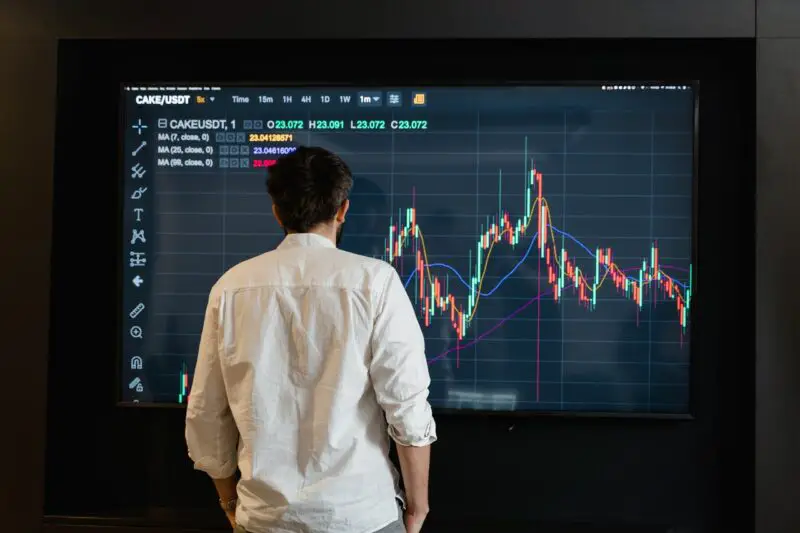Any crypto investor/trader knows the value of methods like technical analysis and fundamental analysis to forecast potential market changes and maximize the chances of gains in an investment/trading strategy.
Nonetheless, many investors forget that sentiment analysis is extremely important as well, especially in a market that is not regulated by governments or central banks, such as the crypto industry. You need to consider it any time you decide to buy bitcoin, ETH, ICX, or any other crypto.
Sentiment analysis involves decision-making based on third parties’ emotions, which can be a great indicator considering that the cryptocurrency market is still relatively new, and many investors are still exposed to the “herd effect”.
Market Sentiment vs Cryptocurrency Popularity
In essence, most amateur investors are guided by a simple principle, which is buying digital assets when their price is appreciating, and selling them when they are about to lose value.
In this sense, there are several sources of information that retail investors utilize trying to predict possible oscillatory movement in the value of Bitcoin, including news aggregators and comments from the crypto community about the performance of the asset.
However, dealing with such a volume of information and judging the relevance of all the absorbed data is certainly an overwhelming task, leading many retail investors to make decisions based solely on the “herd effect“.
Herd effect here stands for the feeling of the collective as far as the asset class is concerned. When they see everyone buying and being optimistic, they do the same without giving it much thought.
When FUD sets in and everyone is claiming the death of the crypto markets, they too will sell everything.
Effects of Investors’ Attention on Bitcoin Market Changes

In essence, the sudden record-breaking Bitcoin pricing spikes are explained by the principle of supply and demand. As the world’s most valuable crypto asset is not regulated by any monetary authority, its price variation is extremely influenced by the investors’ opinion.
Additionally, as there is an increasingly positive opinion about Bitcoin, even some institutional investors, as companies, funds, and banks began to bet on Bitcoin, which contributes to its validation both as a hedging asset and as a form of currency.
This year (2021), the highest level of enthusiasm erupted in early February, when Elon Musk, founder of Tesla and one of the world’s richest men, posted a series of statements supporting cryptocurrencies – especially Bitcoin – in his Twitter account.
Consequently, the social media effect started a Bitcoin race, which led to a massive herd effect that has attracted many crypto enthusiasts and even people who have never been interested in investments believing they could make “easy money” with Bitcoin.
The entry of large investors created a frenzy with the news supporting the ever-growing acceptance of digital assets. Hence, people saw this movement and were afraid to be left out, which led to irrational behavior and a certain unwarranted optimism.
As it is plain to see, the mass exposition of cryptocurrencies in the mainstream media directly affects Bitcoin market changes.
Explaining Fear and Greed Indexes and How They Affect Crypto Market Sentiment
Fear and Greed indexes are still underrated tools considering they are not widely utilized neither by seasoned investors nor crypto newbies. You can find them on many popular price tracking platforms like Coinmarketcap, CoinGecko, as well as other databases of cryptoanalysis.
Undoubtedly, the cryptocurrency industry is extremely affected by the emotional behavior of investors, who are driven primarily by fear or greed, and the measure takes many variables into consideration.
When one of these feelings reaches an extreme level, the market rationality is left out of the equation, causing the price of a cryptocurrency (in this case, bitcoin price) to detach from the expected trajectory for that specific moment.
This way, experienced traders are able to (loosely) predict a price movement towards the upside – when extreme fear sets – or a move towards the downside when everyone is excited about an unrealistic price target.
Understanding Fear Periods and How They Affect Bitcoin Prices
In periods of extreme fear, the market sentiment is typically very pessimistic, which means no good news or optimistic forecast will be able to attract new crypto investors/traders or encourage the existing ones.
On such occasions, the crypto market becomes more and more a seller’s market, while Bitcoin’s price tends to remain low.
Understanding Greed Periods and How They Affect Bitcoin Prices

On the other hand, greed periods are characterized by a sudden and rapid rise in the price of any asset. Consequently, market participants become increasingly greedy, always seeking more and more profit.
In such situations, the market sentiment is mainly positive, which means any good news can cause frenzy among investors and enthusiasts, leading to price appreciations and more apparently “positive” vibes.
However, all the greed takes away the market’s reasonability, as investors and enthusiasts begin to overrate an asset. This way, the cycle goes until the market realizes that the value of the asset in question is not justified by the price, which causes a further drop in prices. But most, unfortunately never reach the point of open-minded realization.
In time, investors enter into a “mania phase” which we have so often seen repeat, where they create unrealistic expectations and promise to never sell. Utter ignorance of market dynamics, market cycles, and historic price action.
Elon Musk Tweets – Great sentiment example
Over the past few months, we have seen Elon Musk cause a huge sentimental stir in the crypto markets. And while most are currently bashing the founder of Tesla for openly bashing Bitcoin and supporting DOGE, the reaction of the public is fascinating to analyze.
Top Bitcoin maximalists are now openly hating on Elon Musk, calling him a fraud, asking him to leave the space and stick to what he knows, all while he continues to materialize the “most entertaining scenario”.
When observed from above, it is easy to understand that it is not Elon Musk who causes the volatility in price, but rather the reaction of retail traders with low conviction. While investing used to be about long-term belief in an asset class of SoV, currently it is all about short-term gains.
This proves that:
- Mainstream adoption is happening right now, mainly from inexperienced investors, and
- Coins are moving from “weak hands” to investors with a strong conviction in the potential of cryptocurrency.
Regulatory frameworks – Another element to pay attention to
Another example we can bring up here is the global regulation of on-ramps and off-ramps when it comes to crypto purchases. Many countries are currently lifting up their hands for the tax evasion that occurs as a result of privacy-oriented payment systems such as crypto.
Hence, they will often cause FUD through vague statements and about the regulation of cryptocurrency.
President Biden recently announced his plan to tighten up regulatory control of cryptocurrency to avoid ransomware attacks and funding terrorist groups. This caused negative market sentiment to set in and Bitcoin lost nearly 10 percent of its value in the following day.
Then the mayor of Miami openly states that employees of the state will have the option to receive their salaries in Bitcoin and the price spikes up again. In other words, due to the relative youth of the market, and the uncertainty that comes with it, traders will look into opportunities and threats caused by regulatory rumors, causing massive volatility in both price and sentiment.
Final Thoughts
Digital assets are becoming increasingly competitive in the financial market, both when it comes to attracting retail investors that just want to profit from market fluctuations and opening space for institutional investments (e.g., Tesla).
This is especially true for Bitcoin, which is not adopted by more than 40 large-scale institutions, and Ethereum, which promises to decentralize our entire world, and not just finance.
Although forecasting Bitcoin’s market fluctuations depends mostly on technical and fundamental factors, it is also crucial to consider the market sentiment around the digital asset.
The three components of cryptocurrency analysis are equally important and should be used in conjunction. Emotional reaction to volatility still is and likely will be the biggest driver of the current fluctuations in price.
In this sense, crypto markets are largely driven by emotion, and sentiment can be reflected in the price of the assets. But don’t worry. You can use this knowledge to your advantage and trade accordingly. By doing so you will not only increase the value of your portfolio, but you will be more capable of understanding real opportunities from temporary shakeouts.
And that’s it! Keep in mind that this article does not aim to provide financial advice, and the contents should only be seen as educational material to improve your research skills. Sentiment analysis is often avoided as it requires information from multiple sources, and a strong ability to decode the main message behind it.
However, if applied correctly, the hints you get through it will help you make much better decisions in your trading career.

The crypto world is my passion and I believe in the crypto future. So I have spent the past 8 years studying as much as I can and sharing my own experiences with people. I am writing now about new trends – how crypto keeps changing the world, businesses, our understanding of money, transactions, and art.
